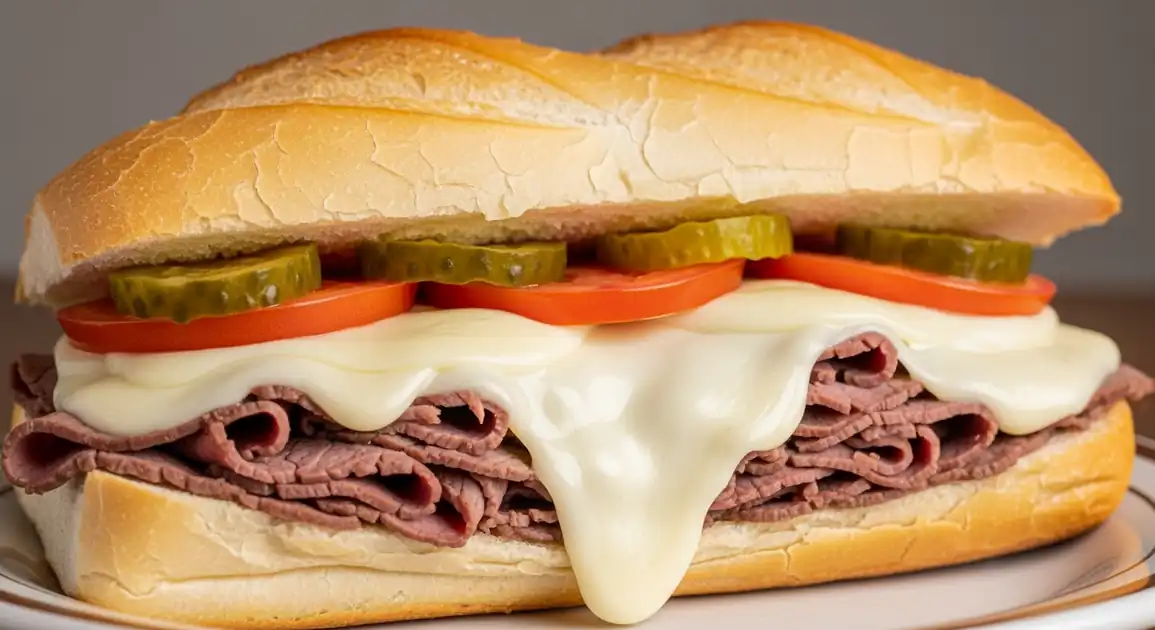Bauru Paulista (Sandwich)
Bauru Paulista

Description
São Paulo is the birthplace and heartland of the authentic Bauru Paulista. While countless variations exist, the city's traditional 'lanchonetes' and 'padarias', especially historic ones like Ponto Chic, strive to maintain the original recipe featuring roast beef, mozzarella, tomato, and pickles in a French roll.
Dietary Information
Serving information
Serving style
Typically served warm on a plate, sliced diagonally. In iconic places like Ponto Chic, the presentation might be more traditional. Often accompanied by freshly squeezed orange juice or a 'chope' (draft beer).
Quick facts
Padarias: Often 24/7 or very long hours (e.g., 6 AM - 10 PM). Lanchonetes: Vary widely, many open for lunch through late evening/night.
Safety Tips
What to Look For
-
Sandwich assembled and heated fresh to order
Ensures ingredients haven't been sitting out and that the sandwich is heated thoroughly, especially the meat and cheese.
-
Cheese is fully melted and hot
Proper heating is crucial for safety and taste. The cheese should be visibly melted and gooey.
-
Fresh-looking ingredients (roast beef, tomato)
Roast beef should look moist and properly preserved. Tomatoes should be fresh and vibrant. Avoid wilted or discolored ingredients.
-
Clean preparation area and utensils
Observe the cleanliness of the grill/press, cutting boards, knives, and the vendor's hygiene practices.
-
Busy establishment with high turnover
Suggests ingredients are likely fresh due to frequent replenishment.
What to avoid
-
Pre-assembled sandwiches sitting at room temperature
Increases risk of bacterial growth, especially with meat and cheese. Insist on fresh preparation.
-
Meat or cheese that looks old, dry, or discolored
Indicates poor quality and potential spoilage.
-
Sandwich served lukewarm or cold
Suggests improper heating, which is a food safety concern for meat and cheese sandwiches.
-
Visibly dirty grill, press, or preparation surfaces
Poor hygiene significantly increases the risk of cross-contamination.
Price information
Price range
Budget tips
- Neighborhood 'padarias' away from tourist centers often offer better prices (20-30 BRL).
- The original Ponto Chic charges a premium for its famous Bauru (closer to 40-50 BRL).
- Look for 'prato feito' lunch deals that might include a sandwich option.
Value indicators
- Adherence to the original recipe (rosbife, mozzarella, tomato, pickle).
- Quality of the roast beef.
- Cheese melted perfectly using the correct method (bain-marie/steam ideally, but good heating otherwise).
- Served in a classic 'lanchonete' or 'padaria' environment.
Where to Find This Dish
Centro (Largo do Paiçandu)
Home to the original Ponto Chic, the birthplace of the Bauru.
Ponto Chic restaurant
Lunch, Evening
Neighborhood Padarias
High-quality padarias across various neighborhoods (e.g., Pinheiros, Vila Madalena, Moema, Higienópolis) offer excellent Bauru sandwiches.
Bella Paulista, Padaria Brasileira, St. Etienne
Anytime during opening hours
Traditional Lanchonetes
Classic São Paulo snack bars scattered throughout the city, known for their sandwiches.
Estadão Bar & Lanches (famous for pernil, but has other sandwiches), Local neighborhood 'lanchonetes'
Lunch, Evening, Late Night
Vendor Tips
- Visit Ponto Chic for the historical experience and the 'original' certified recipe.
- Don't be afraid to try the Bauru at a highly-regarded local 'padaria' - they often take great pride in their sandwiches.
- Always specify 'com rosbife' to avoid the common ham substitution.
- Confirm the price, especially at more famous or upscale locations.
How to Order
Regional Variations
-
'Bauru do Ponto Chic'
(Bauru do Ponto Chic)
The certified original recipe served at the historic Ponto Chic restaurant, noted for specific preparation techniques like melting cheese in a bain-marie.
-
'Bauru de Padaria'
(Bauru de Padaria)
Often reliable and tasty versions found in neighborhood bakeries, which might use slightly different heating methods (grill press) but good ingredients.
Cultural context
History
The Bauru sandwich boasts a specific origin story. In 1934, Casimiro Pinto Neto, a law student from the town of Bauru frequenting the Ponto Chic bar in São Paulo, dictated a custom sandwich recipe to the cook. It included French bread hollowed out, roast beef, mozzarella melted in a bain-marie, tomato, and pickled cucumber. The creation was overheard, replicated, and quickly became famous, named after the student's hometown. Ponto Chic still serves the 'Original Bauru' today.
Local significance
The Bauru is a culinary symbol of São Paulo, deeply ingrained in the city's gastronomic history and 'paulistano' identity.
Eating customs
- Enjoyed casually at the counter or seated.
- Often paired with coffee ('cafezinho') or fresh juice.